- La
migraine : 27e leçon in Leçons sur
l'appareil-vaso-moteur
1875
-
- "Appelé à prendre possession
de la chaire de pathologie expérimentale
et comparée, lorsqu'elle est devenue
vacante par la suite de la démission de
M. Brown Séquard, j'ai choisi, pour sujet
de mon premier cours (mars juillet 1873), la
physiologie et la pathologie de l'appareil
nerveux vasomoteur" écrit Vulpian dans la
préface. En compagnie de Charcot
à la Salpêtrière,
Edmé Félix Alfred Vulpian (1826
1887), élève de Flourens,
se consacra à l'étude de la
physiologie et de la pathologie du
système nerveux. Il étudia la
dégénérescence et la
régénération du
système nerveux ainsi que l'effet des
drogues sur celui ci. Il apporta un nouvel
éclairage sur la neuropathologie.
-
- Physiologiste, neurologue. Médecin
des hôpitaux. Professeur d'anatomie
pathologique puis de pathologie
expérimentale. Doyen de la faculté
de médecine de Paris.
-
- Dirige de nombreux laboratoires. Travaillera
avec Charcot sur le
système nerveux. En 1856 découvre
ce qui sera identifié en 1909 comme
l'adrénaline et publie " Recherches
expérimentales sur la physiologie et la
pathologie des capsules surrénales". C.R.
Acad. Sci.1856.43.663-665.
-
- Jean-Martin
Charcot et Alfred Vulpian donneront le nom
de Maladie de Parkinson en 1861-1862 au tableau
complet qu'ils présentent dans la Gazette
de Médecine et de Chirurgie (1861.
série 1. tome 8. p765-767& 816-820
puis1862. série 1. tome 9. p54-59. Paris.
Victor Masson et fils).
-
- En1864, Vulpian décrit la
déviation conjuguée de la
tête et des yeux lors de l'ictus
apoplectique = le malade regarde sa
lésion cérébrale:
(Thèse de Jean-Louis Prévost de
Genève). Puis en 1866 il décrit,
avec Charcot, la sclérose en
plaques.
-
- Alfred
Vulpian and Jean-Martin Charcot in Each Other's
Shadow?
- From
Castor and Pollux at La Salpêtrière
to Neurology
Forever
- Bogousslavsky J,
Walusinski O, Moulin T.
- European
Neurology.
2011;65(4):215-222.
-
-
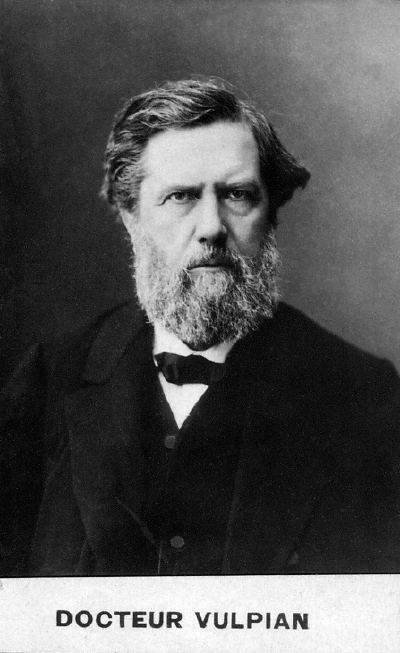
-
- Leçons
sur la physiologie générale et
comparée du système nerveux.
Germer-Baillière, Paris
1866:
- "Le bulbe rachidien,
organe central de la respiration, est
naturellement aussi l'organe central de tous les
phénomènes qui se rattachent au
mécanisme respiratoire. Voilà
comme il gouverne le cri, l'éternuement,
la toux, le bâillement, les efforts
etc.. mouvements très complexes,
coordonnés, et exigeant le concours d'un
grand nombre d'agents nerveux et musculaires,
que vous ne vous étonnerez pas de voir
conspirer vers un but
déterminé..."
-
- "In 1862 [Vulpian] took over, with
Charcot, that chaotic welfare institution for
the chronically sick, known as the
Salpetrière. Vulpian was more restrained
and perhaps even more learned than his great
friend [Charcot], and he was an
experimenter. He worked out the principles of
degeneration, and particularly the regeneration,
of nerves; he established the principles and
added many new facts concerning the vasomotor
and sudmotor apparatus and he made them common
knowledge. Vulpian's influence upon his many
followers in several fields of knowledge made
him the intellectual leader of his day"
(Haymaker & Schiller, Founders of Neurology,
pp. 272 74).
-
-
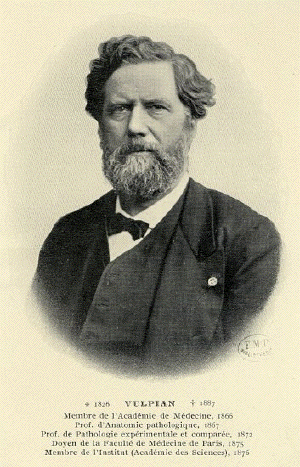 -
- Biography:
http://www.whonamedit.com
- Born in Paris, Edmé Félix
Alfred Vulpian was descended from the
aristocracy and the legal profession, and a
father who wrote successfully for the stage. His
father died of smallpox after refusing
vaccination, leaving four children in poverty.
Vulpian wanted to enter the École
Normale, the top teacher's college in France,
but failed in the entrance concours.
-
- To make a living, Vulpian obtained a
technician's job at the Muséum with Marie
Jean Pierre Flourens (1794-1867) Flourens, the
discoverer of the respiratory centre of the
medulla oblongata. Through Flourens' influence,
Vulpian was entered into medical school at the
age of nineteen, and his doctoral thesis in
1853, on the origin of the cranial nerves III to
X, was regarded as being of the highest
standard.
-
- Vulpian was appointed médecin des
hôpitaux in 1857 and agrégé
at the faculty in 1860, but continued to teach
neurophysiology and for three years was
Flourens' deputy as professor of physiology at
the chair in the Museum for Natural History. In
1867 he succeeded Léon Jean Baptiste
Cruveilhier (1791-1874) as professor of
pathological anatomy at the faculty, despite a
great deal of opposition from the bishops in the
senate. Vulpian was involved in a heavy conflict
with the clergy because his teaching and his
lectures were considered materialistic, and
particularly because of a paper Vulpian had
written on the higher functions of the
brain.
-
- In 1862, Vulpian and Jean-Martin Charcot
(1825-1893) took over the chaotic welfare
institution for the chronically ill known as the
Salpêtrière.
-
- In 1872 he changed to the chair of
experimental and comparative anatomy, while at
the same time holding a position at the Paris
Charité. He was elected member of the
Academy of Medicine in 1867 (16/18: 1869),
succeeded Charles Adolphe Wurtz (1817-1884) as
dean of the faculty of medicine at the
University of Paris in 1875, and the following
year was made a member of the Academy of
Sciences, replacing Gabriel Andral
(1897-1876).
-
- Vulpian was more restrained and perhaps even
more learned than his great friend Charcot, an
experimenter as well as a fine teacher, but
somewhat retiring and therefore greatly
overshadowed by Charcot. He confirmed Flouren's
observations concerning the functions of the
semicircular canal and the cerebellum and
established principles of regeneration of nerves
as well as investigating the vasomotor
functions. Using chromium salts he discovered
the chromaffin system of the adrenal gland and
demonstrated that curare caused paralysis by
affecting a point between nerve and muscle.
-
- He was a prodigious worker who started his
day at 4 a.m. and was much admired by his
students as an outstanding teacher. With
unprecedented conscientiousness he went over and
over his experiments, checking and controlling
them until he could be certain of the results.
The effect on his students was profound. One of
them, Madame Dejerine (Augusta Marie
Dejerine-Klumpke, 1859-1927), was impressed by
his intelligence, gentleness and good looks, and
has recorded how he pointed out to her the
extension of the big toe in paraplegics long
before Babinski's demonstration.
-
- He recognised the lack of the use of the
microscope in French investigative medicine,
whereas Germany with men like Rudolf Virchow
were making was strides. Using the microscope,
he showed that tabes dorsalis was not primarily
a dorsal column disease, and demonstrated the
retrograde changes in the spinal column after
amputation or nerve sectioning.
-
- In 1856 Vulpian applied a solution of ferric
chloride to slices of the adrenal glands and
noted that the medulla stained green while the
cortex did not. He also noted that the same
reaction was given by samples of venous blood
leaving the adrenal, but not by arterial blood
entering the gland. To account for these
observations, he assumed that the medulla
synthesized a substance that was liberated into
the circulation.
-
- Together with Charcot he founded the journal
Archives de Physiologie Normale et Pathologique.
He was permanent secretary of the Academy of
Sciences and undoubtedly was one of the great
influences on French medicine. The achievements
of both his colleagues, Charcot, and his
students, the Dejerines, perhaps kept him from
the international recognition that might
normally have been expected. His written work
comprises 225 publications.
-
- Bibliography:
-
- • Essai sur l'origine réelle de
plusieurs nerfs crâniens. Doctoral thesis,
Paris, 1853.
-
- • Note sur quelques réactions
propres à la substance des capsules
surrénales. Comptes rendus de
l'Académie des Sciences, Paris, 1856, 43:
663-665. Vulpian discovered adrenaline in the
adrenal medulla.
-
- • Des pneumonies secondaires.
Thèse d'agrégation, Paris,
1860.
-
- • Leçons sur la physiologie
générale et comparée du
système nerveux, faites en 1864 au
Muséum d'histoire naturelle. Paris,
Gerner-Baillière, 1866.
-
- • Leçons sur l'appareil
vaso-moteur (physiologie et pathologie) faites
à la Faculté de Médecine de
Paris en 1873. Rédigées par H. C.
Carville. Paris, Gerner-Baillière, 2
volumes, 1874-1875.
-
- • Leçons sur la pathologie
expérimentale de l'appareil
digestif.
-
- • Leçons sur l'action
physiologique des poisons et médicaments,
faites à la Faculté de
médecine de Paris en 1875. Journal de
l'École de médecine.
-
- • Clinique médicale de
l'hôpital de la Charité. 1878.
-
- • Maladies du système nerveux;
leçons professées à la
Faculté de Médecine. 2 volumes,
Paris, Doin, 1879 and 1886.
-
- ©
1994-2001 Ole Daniel Enersen. All rights
reserved.
-
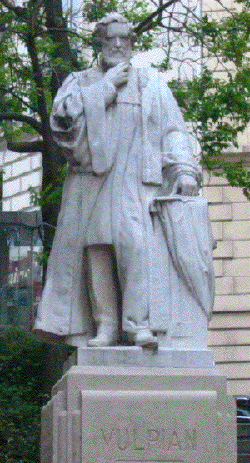 - rue Antoine Dubois
Paris
5°
- Etudes par Paul
Richer
- exécutée par Ernest
Hiolle (1834-1886)
sculpteur
- M. Dussart
architecte
- Paris
19/05/1887
-
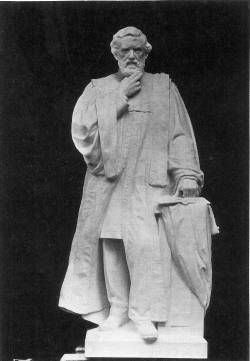
- le platre de
Paul Richer
-
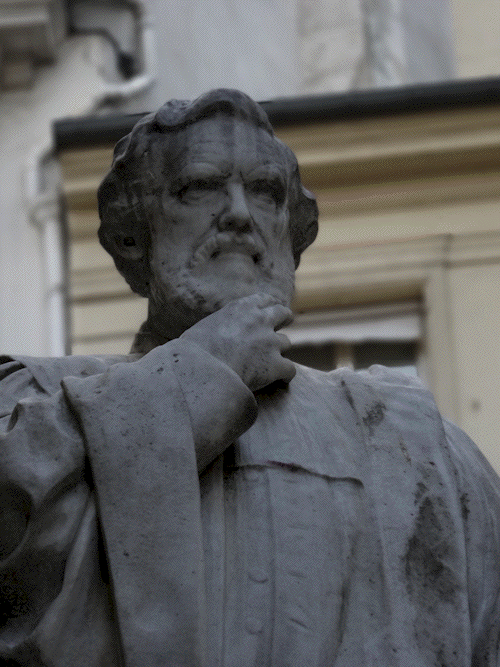
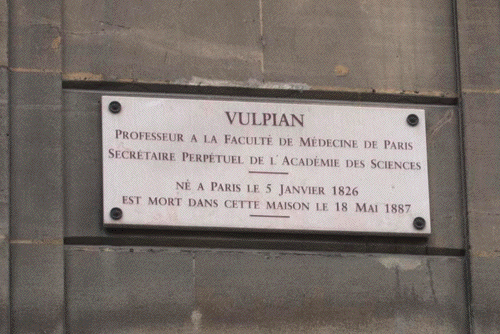 - plaque posée sur l'immeuble
du 24 rue soufflot Paris 5 où habitait
Vulpian
-
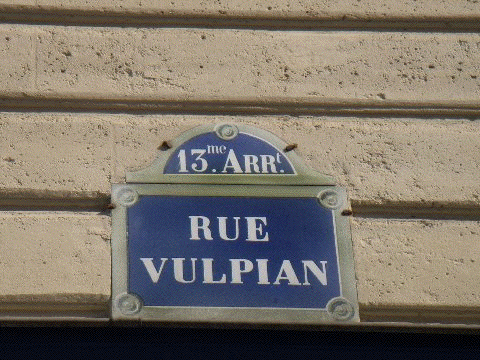 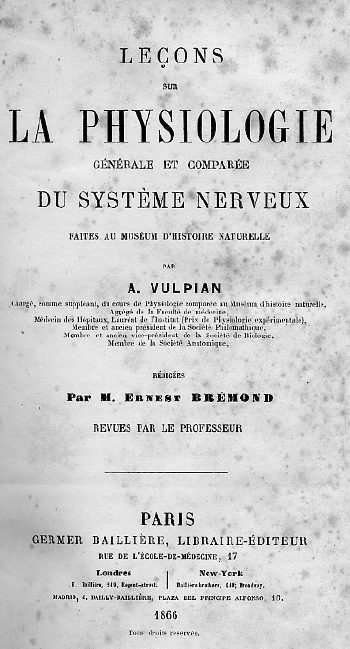 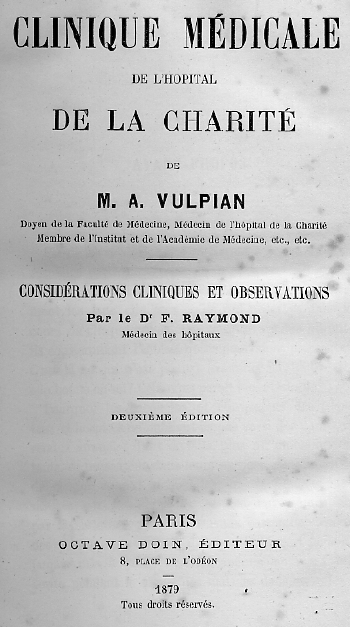 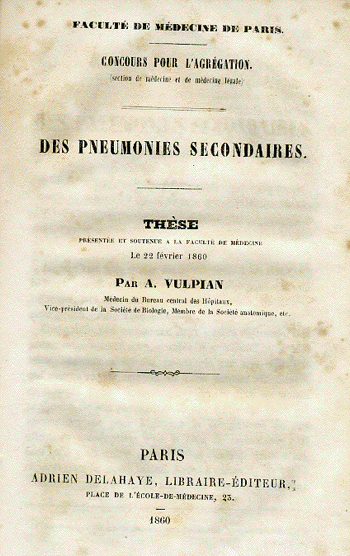 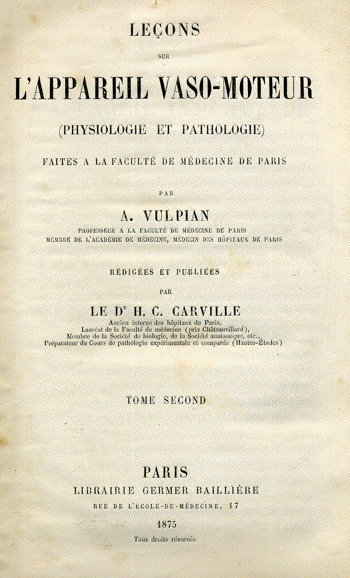 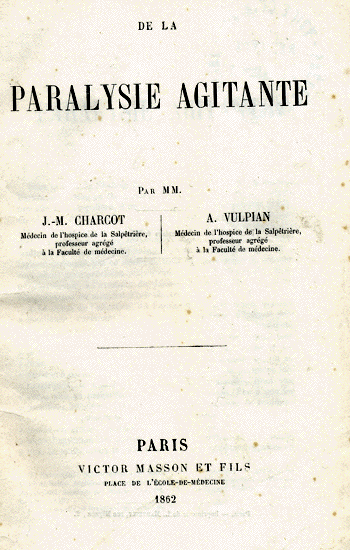 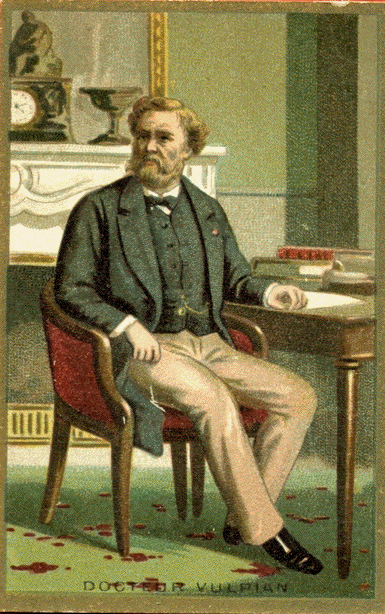
|














